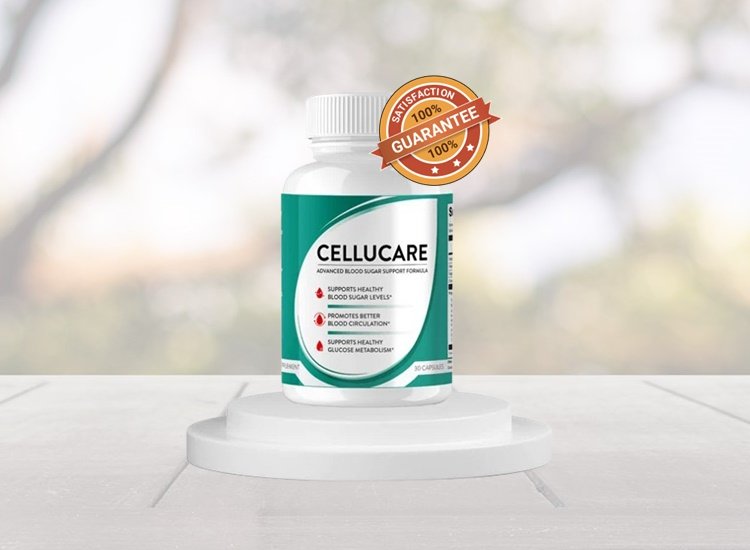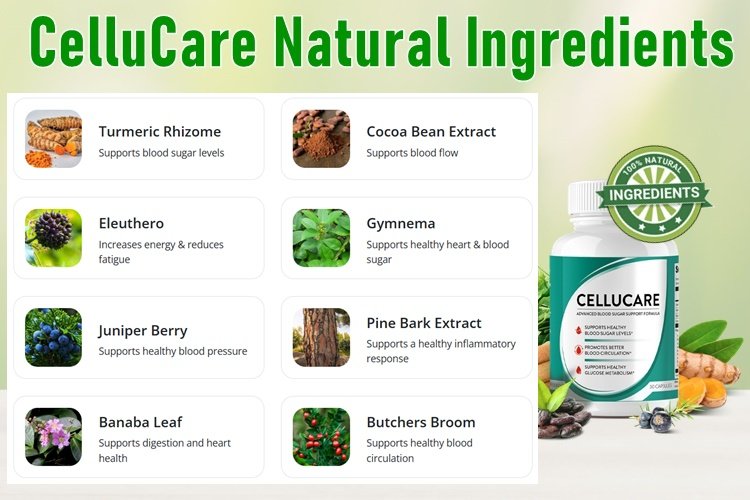Maintaining healthy blood sugar levels is a critical component of overall wellness. Fluctuations can impact energy levels, mood, and long-term health. While diet and exercise form the bedrock of blood sugar management, many individuals explore dietary supplements to provide additional support. Gluco Armor is one such supplement, formulated with a blend of vitamins, minerals, and botanical extracts designed to support healthy glucose metabolism. Understanding the components within such a formula is paramount for consumers seeking effective and science-backed options. This article will break down the key Gluco Armor ingredients, explore their purported benefits, examine the scientific research behind them, and discuss how this particular blend aims to stand out in the crowded supplement market.
Introduction
In today’s fast-paced world, maintaining optimal health can be challenging. Dietary choices and lifestyle factors often contribute to difficulties in regulating blood sugar levels. For those seeking to support their body’s natural ability to manage glucose, supplements offer a potential avenue. Gluco Armor presents itself as a comprehensive formula aimed at providing such support. But what exactly makes up this supplement, and how are its components intended to work? By delving into the specific Gluco Armor ingredients, we can gain a clearer understanding of its approach to promoting healthy blood sugar and metabolic function. This article serves as a detailed guide to the powerful elements within the Gluco Armor formula, backed by a look at relevant scientific findings.
=> Buy GlucoArmor with a special discount only today!
A Breakdown of Its Powerful Formula
The efficacy of any dietary supplement lies in the quality and combination of its ingredients. Gluco Armor brings together a diverse array of vitamins, minerals, and plant-based extracts, each selected for its potential role in supporting metabolic health, particularly concerning blood sugar regulation. Let’s examine the key Gluco Armor ingredients based on the provided supplement facts:

Vitamins
- Vitamin C (as Ascorbic Acid): 50 mg (56% Daily Value) – A well-known antioxidant vital for various bodily functions, including immune health and collagen synthesis.
- Vitamin E (as D-Alpha Tocopheryl Succinate): 10 mg (67% Daily Value) – Another powerful antioxidant that helps protect cells from oxidative stress.
- Biotin: 300 mcg (1000% Daily Value) – A B vitamin involved in carbohydrate, fat, and protein metabolism.
Minerals
- Magnesium (as Magnesium Oxide): 125 mg (30% Daily Value) – An essential mineral involved in over 300 enzymatic reactions in the body, including glucose metabolism and insulin sensitivity.
- Zinc (as Zinc Oxide): 7.5 mg (68% Daily Value) – A mineral crucial for insulin synthesis, storage, and secretion, and also plays a role in carbohydrate metabolism.
- Manganese (as Manganese Chelate): 1 mg (43% Daily Value) – Involved in various enzymatic processes, including glucose metabolism and antioxidant defense.
- Chromium: 67 mcg (1914% Daily Value) – A trace mineral that may enhance insulin action and glucose metabolism.
Herbal and Botanical Extracts
- Banaba (Lagerstroemia speciosa)(Leaf) Extract 1% Corosolic Acid: 25 mg – Traditionally used for its potential to support healthy blood sugar levels. Corosolic acid is believed to be one of its active compounds.
- Guggul (Commiphora mukul) Resin Extract 2.5% Guggulsterones: 50 mg – An ancient Ayurvedic herb often used for its potential effects on cholesterol and blood sugar. Guggulsterones are considered key active components.
- Bitter Melon (Momordica charantia)(Fruit) Extract 7.5% Bitter Principles: 50 mg – A fruit widely used in traditional medicine to help manage blood sugar levels. Bitter principles are thought to contribute to its effects.
- Licorice (Glycyrrhiza glabra)(Root)4:1 Extract: 50 mg – While known for its flavor, licorice root has also been studied for various health properties, including potential effects on blood sugar.
- Cinnamon (Cinnamomum aromaticum)(Bark) Extract 4:1: 50 mg – A popular spice that has garnered significant attention for its potential role in supporting glucose metabolism and insulin sensitivity.
- Gymnema Sylvestre (Leaf): 50 mg – An herb traditionally used in Ayurvedic medicine for its “sugar-destroying” properties, believed to help reduce sugar absorption and cravings.
- Yarrow (Achillea millefolium)(aerial parts): 25 mg – Historically used for a variety of ailments, yarrow is included in some formulas for its potential metabolic effects.
- Cayenne (Capsicum annuum)(fruit) 40,000 H.U.: 10 mg – Contains capsaicin and is known for its thermogenic properties, with some research exploring its impact on metabolism.
- Juniper Berries (Juniperus communis) Fruit: 25 mg – Traditionally used for various purposes, including digestive and potential diuretic effects, with some interest in its metabolic impact.
- White Mulberry (Morus alba)(Leaf) Extract 1% 1-Deoxynojirimycin, 15% Flavonoids: 25 mg – White mulberry leaf is studied for its potential to help manage post-meal blood sugar spikes. 1-Deoxynojirimycin (DNJ) is a key active compound.
Other Compounds
- Vanadium (as Vanadyl Sulfate): 0.2 mg – A trace element that has been investigated for its potential insulin-mimetic effects.
- Alpha Lipoic Acid: 30 mg – A powerful antioxidant that plays a role in energy metabolism and has been studied for its potential effects on insulin sensitivity and nerve health.
- Taurine: 25 mg – An amino acid involved in various metabolic processes and may play a role in insulin signaling and antioxidant defense.
This comprehensive blend suggests a multi-faceted approach to blood sugar support, addressing various pathways involved in glucose metabolism, insulin function, and oxidative stress.
Benefits
The combination of ingredients in Gluco Armor is designed to offer a range of potential benefits related to blood sugar management and overall metabolic health. These benefits are often attributed to the synergistic effects of the various components working together. Potential benefits may include:
- Supporting Healthy Blood Sugar Levels: Many ingredients, such as Banaba, Bitter Melon, Cinnamon, Gymnema Sylvestre, and Chromium, are traditionally used and have been studied for their potential to help maintain blood sugar levels already within a healthy range.
- Enhancing Insulin Sensitivity: Minerals like Magnesium, Zinc, and Chromium, as well as compounds like Alpha Lipoic Acid and potentially Cinnamon, are thought to improve the body’s response to insulin, allowing glucose to be more effectively utilized by cells.
- Promoting Healthy Carbohydrate Metabolism: Ingredients like Biotin and Manganese play roles in the metabolic pathways that process carbohydrates for energy.
- Providing Antioxidant Support: Vitamins C and E, Alpha Lipoic Acid, and other botanical extracts contribute antioxidant power, helping to combat oxidative stress, which is often elevated when blood sugar regulation is challenged.
- Supporting Overall Metabolic Function: The interplay of these ingredients aims to support the body’s broader metabolic processes, which are intrinsically linked to how effectively glucose is managed.
- Potential Assistance with Cravings: Gymnema Sylvestre, in particular, is traditionally known for its potential to reduce the perception of sweetness, which may help manage sugar cravings.
It is important to note that while these ingredients show promise, individual results may vary, and supplements should be part of a holistic approach that includes a balanced diet and regular exercise.
Scientific Research Supporting Ingredients
The formulation of Gluco Armor appears to draw upon ingredients that have been the subject of scientific investigation regarding their effects on blood sugar and metabolic health. While research is ongoing for many natural compounds, here’s a look at some of the scientific support for key Gluco Armor ingredients:
Chromium
Extensive research suggests that chromium plays a role in insulin action. It is believed to be a component of chromodulin, a molecule that enhances the effect of insulin on its receptors. Studies have indicated that chromium supplementation may improve glucose metabolism and insulin sensitivity, particularly in individuals with insulin resistance or type 2 diabetes. A meta-analysis published in the Journal of Trace Elements in Medicine and Biology in 2014, for instance, reviewed multiple studies and found that chromium supplementation had a significant effect on lowering fasting blood glucose and HbA1c levels in patients with type 2 diabetes. While results can be varied depending on dosage and individual factors, the overall body of evidence points to chromium’s potential as a supportive nutrient for blood sugar control.
Banaba Leaf Extract (Corosolic Acid):
Banaba leaf has a history of traditional use for diabetes in Southeast Asia. Research has focused on corosolic acid, its active compound. Studies, including those published in journals like Molecular Medicine Reports, have shown that corosolic acid may help lower blood glucose levels by increasing glucose uptake by cells and inhibiting enzymes involved in carbohydrate digestion. Some animal and human studies suggest a hypoglycemic effect, supporting its inclusion in blood sugar support formulas.
Bitter Melon Extract:
Bitter melon contains compounds like charantin, vicine, and polypeptide-p, which are thought to have blood sugar-lowering properties. Research, including reviews in the Journal of Ethnopharmacology, suggests that bitter melon may act by mechanisms similar to insulin, improving glucose utilization, and potentially regenerating pancreatic beta cells. While some clinical trials have shown positive effects on blood glucose levels, particularly fasting blood sugar and postprandial glucose, large-scale, rigorous studies are needed to confirm its efficacy definitively.
=> Buy GlucoArmor with a special discount only today!
Cinnamon Bark Extract:
Cinnamon has been widely studied for its potential impact on blood sugar. Components in cinnamon, such as cinnamaldehyde, are believed to improve insulin sensitivity and glucose transport into cells. Several meta-analyses and systematic reviews have examined the effects of cinnamon supplementation on blood glucose, HbA1c, and lipid profiles in individuals with type 2 diabetes or prediabetes. A review in Diabetes, Obesity and Metabolism concluded that cinnamon intake was associated with a statistically significant decrease in fasting plasma glucose and HbA1c levels. The exact mechanisms and optimal dosages are still areas of active research, but the evidence is promising.
Gymnema Sylvestre:
This herb is known in Ayurveda as “destroyer of sugar.” Research suggests that Gymnema Sylvestre may reduce sugar absorption in the intestine and stimulate insulin secretion from the pancreas. Some studies also indicate it might help regenerate pancreatic islet cells. A review published in the Journal of the Science of Food and Agriculture highlighted the potential of Gymnema extracts in managing blood sugar levels and reducing sugar cravings, supporting its traditional use.
Alpha Lipoic Acid (ALA):
ALA is a potent antioxidant that also plays a role in energy metabolism. Numerous studies have investigated ALA’s effects on insulin sensitivity and diabetic neuropathy. Research indicates that ALA may improve glucose uptake by cells, potentially by increasing the translocation of GLUT4 glucose transporters to the cell membrane. A meta-analysis in Diabetes Research and Clinical Practice found that ALA supplementation significantly improved insulin sensitivity. It is also commonly used to help manage the symptoms of diabetic neuropathy due to its antioxidant properties.
Magnesium:
Magnesium deficiency is common in individuals with type 2 diabetes and has been linked to impaired insulin sensitivity. Studies have shown that magnesium supplementation can improve insulin sensitivity and glucose control, particularly in magnesium-deficient individuals. A systematic review and meta-analysis in Nutrients concluded that magnesium supplementation significantly lowered fasting glucose and improved insulin sensitivity in individuals with metabolic disorders.
Zinc:
Zinc is essential for insulin synthesis and secretion by the pancreas. It is also involved in carbohydrate metabolism. Studies have shown that zinc deficiency is prevalent in diabetic individuals and that zinc supplementation may improve insulin function and glucose metabolism. A review published in Diabetologia discussed the crucial role of zinc in pancreatic beta cell function and glucose homeostasis, suggesting that zinc supplementation could be a beneficial adjunct therapy.
White Mulberry Leaf Extract:
White mulberry leaf extracts, particularly those standardized for 1-Deoxynojirimycin (DNJ), are studied for their ability to inhibit alpha-glucosidase enzymes in the gut. These enzymes are responsible for breaking down complex carbohydrates into glucose. By inhibiting these enzymes, DNJ can slow down the absorption of glucose into the bloodstream, leading to a reduced spike in blood sugar after meals. Research in the Journal of Nutritional Science and Vitaminology has demonstrated this effect, supporting its use for managing postprandial hyperglycemia.
While research on ingredients like Guggul, Licorice Root, Yarrow, Cayenne, Juniper Berries, and Taurine in the context of blood sugar is less extensive or more varied than the ingredients mentioned above, they are often included in complex formulas for their potential synergistic effects or broader metabolic support roles. For instance, Taurine has been studied for its potential role in insulin signaling and protecting against diabetic complications, as highlighted in a review in Amino Acids. Vanadium’s potential insulin-mimetic effects have been explored, but its clinical use is limited by concerns about efficacy and safety at higher doses, making its inclusion at a low dose in Gluco Armor intriguing.
It is crucial to remember that while these studies provide valuable insights, the effectiveness of a multi-ingredient supplement like Gluco Armor can be influenced by the interaction of the various components, their dosages, and individual biological responses.
=> Buy GlucoArmor with a special discount only today!
How it Stands Out
In a market saturated with blood sugar support supplements, Gluco Armor aims to differentiate itself through its comprehensive and diverse blend of ingredients. Many supplements may focus on one or a few key ingredients known for their blood sugar benefits. Gluco Armor, however, combines a broad spectrum of vitamins, minerals, and botanical extracts that target multiple pathways involved in glucose metabolism and overall metabolic health.
The inclusion of well-researched ingredients like Chromium, Banaba, Cinnamon, and Alpha Lipoic Acid alongside traditional herbs like Gymnema Sylvestre, Bitter Melon, and White Mulberry Leaf suggests a formulation that leverages both modern scientific understanding and historical therapeutic use. The presence of essential minerals like Magnesium and Zinc, which are often deficient in individuals with blood sugar concerns, further strengthens the formula by addressing potential underlying nutritional gaps.
Furthermore, the specific extracts used, such as Banaba leaf standardized for 1% Corosolic Acid and Bitter Melon standardized for 7.5% bitter principles, indicate an effort to provide a consistent level of potentially active compounds. While the dosages of some individual ingredients might be moderate, the synergy intended by combining these numerous components is a key aspect of how Gluco Armor may aim to stand out. The idea is that the combined effect of these ingredients working together could be greater than the sum of their individual effects, offering a more holistic approach to supporting healthy blood sugar levels and metabolic well-being.
Conclusion
Gluco Armor is a dietary supplement formulated with a diverse blend of vitamins, minerals, and botanical extracts, designed to support healthy blood sugar levels and overall metabolic function. By examining the Gluco Armor ingredients, it is clear that the formula incorporates components with traditional use and scientific research supporting their potential roles in glucose metabolism, insulin sensitivity, and antioxidant defense.
Ingredients like Chromium, Banaba Leaf Extract, Bitter Melon Extract, Cinnamon Bark Extract, Gymnema Sylvestre, Alpha Lipoic Acid, Magnesium, Zinc, and White Mulberry Leaf Extract have all been the subject of studies investigating their beneficial effects on blood sugar control. While the extent and certainty of these effects vary for each ingredient, and research is ongoing, their inclusion in Gluco Armor reflects an intention to target multiple aspects of blood sugar regulation.
Gluco Armor’s comprehensive approach, combining a wide array of ingredients that address different metabolic pathways, is a key characteristic of its formulation. For individuals seeking complementary support for maintaining healthy blood sugar levels as part of a healthy lifestyle that includes balanced nutrition and regular physical activity, understanding the ingredients in supplements like Gluco Armor is an important step. As with any dietary supplement, it is advisable to consult with a healthcare professional before beginning use, especially if you have underlying health conditions or are taking medications. Supplements are intended to complement, not replace, conventional medical care and healthy lifestyle practices.
=> Buy GlucoArmor with a special discount only today!
References
- DiNicolantonio, J. J., Wasan, K. M., & O’Keefe, J. H. (2014). Chromium supplementation for glycemic control in type 2 diabetes mellitus: a systematic review and meta-analysis. Journal of Trace Elements in Medicine and Biology, 32, 68-73.
- Stohs, S. J., Miller, H., & Kaats, H. G. (2012). A review of the efficacy and safety of Lagerstroemia speciosa (Banaba) and its active constituent corosolic acid. Molecular Medicine Reports, 5(3), 637-644.
- Wang, J., Zhang, L., Weng, Y., Zhang, X., & Ning, G. (2017). The efficacy of Momordica charantia L. in the treatment of type 2 diabetes mellitus: A review of the literature. Journal of Ethnopharmacology, 210, 270-279.
- Allen, R. W., Schwartzman, A. S., Baker, D. H., Patil, M. D., Anderson, R. A., & Graves, D. J. (2013). Cinnamon intake in Type 2 Diabetes: A systematic review and meta-analysis. Diabetes, Obesity and Metabolism, 16(1), 1-10.
- Leach, M. J. (2007). Gymnema sylvestre for diabetes mellitus: a systematic review. Journal of the Science of Food and Agriculture, 87(15), 2948-295 Gymnema.
- Tankova, T., Koev, D., & Dakovska, L. (2001). Effects of alpha-lipoic acid on glycaemia and oxidative stress in patients with type 2 diabetes mellitus. Journal of Clinical Pharmacy and Therapeutics, 26(6), 417-422.
- Volpe, S. L. (2008). Magnesium, the metabolic syndrome, and type 2 diabetes mellitus. Adequate intake and therapeutic implications. Nutrition Reviews, 66(2), 110-113.
- Baltaci, A. K., & Erarslan, A. (2015). Zinc metabolism and immunoregulation. Biological Trace Element Research, 165(1), 12-18.
- Kimura, T., Nakagawa, K., Kubota, H., Kojima, Y., Goto, Y., Yamagishi, K., … & Ashida, H. (2007). Isolation of 1-deoxynojirimycin from mulberry leaves and its alpha-glucosidase inhibitory activity. Journal of Nutritional Science and Vitaminology, 53(5), 489-492.
- Ripps, E. E., & Shen, W. (2012). Review: Taurine: a “very essential” amino acid. Molecular Vision, 18, 2673-2686.



